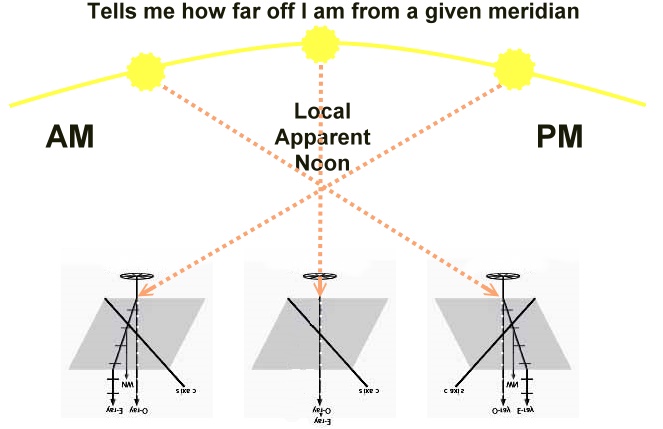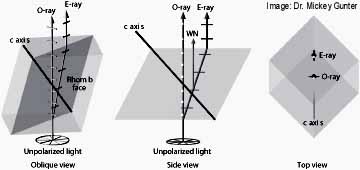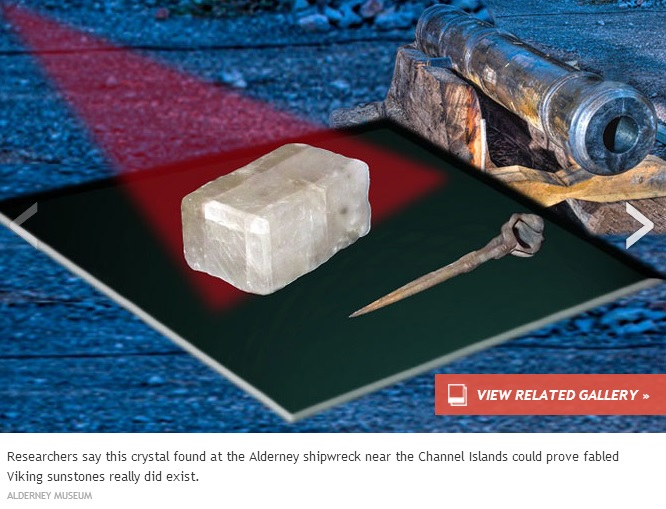It looks like you're using an Ad Blocker.
Please white-list or disable AboveTopSecret.com in your ad-blocking tool.
Thank you.
Some features of ATS will be disabled while you continue to use an ad-blocker.
share:
I love sunstone
It is beautiful. I've been fascinated by it for a long time - would love to know exactly what the Vikings where thinking when they decided to use it, or what even put the idea in their mind that it would work in this way in the first place?
I had a pendant that was made from sunstone very similar to this sphere www.crystalarium.com... would love one of those on my desk!
I have a lot of rainbow moonstone and labradorite which are also both feldspar, just something about them all, very mystical.
Anyway, thanks for the interesting links
It is beautiful. I've been fascinated by it for a long time - would love to know exactly what the Vikings where thinking when they decided to use it, or what even put the idea in their mind that it would work in this way in the first place?
I had a pendant that was made from sunstone very similar to this sphere www.crystalarium.com... would love one of those on my desk!
I have a lot of rainbow moonstone and labradorite which are also both feldspar, just something about them all, very mystical.
Anyway, thanks for the interesting links
reply to post by xSunstone
Actually, the stone in the article is different, I believe than what you and I mean by sunstone. I think this is a form of clear calcite, Icelandic spar, from what I've found on the internet.
Actually, the stone in the article is different, I believe than what you and I mean by sunstone. I think this is a form of clear calcite, Icelandic spar, from what I've found on the internet.
Originally posted by H1ght3chHippie
Extremely interesting. I was so far completely unaware of using crystals as navigation devices.
Makes using a magnetic compass look backwards. I've checked out the Nordskip website and the diagrams, and tried to figure out how exactly it works. I can#t seem to figure it out, so maybe someone has a brief understanding and could enlighten us ?
Well, I could not really find anything of substance on SunStones, other than Pokemon apparently uses them to fight in a game called WoW and you can do mystical things with them. Actual life is much more fun than that.
However, as a certified navigator, and since my family descends from the final battle between the Vikings and the Scotsmen - and my father is Scottish and my Mother is Norwegian, and having owned several vessels and sailed completely around the world on all sorts of methods, LORAN, OMEGA, Celestial Navigation, GPS, RDF, etc, I can tell you what I would use the Sunstone for:
I would employ the spread of the Sun's rays from the stone onto a white surface beneath it in order to observe how the refracted rays lined up at different times of the day (Ante Meridian and Post Meridian), and know when to detect Local Apparent Noon. At local apparent Noon (LAN), I suspect the refraction would progress to a minimum and stop and begin to expand again, and by marking this refraction on a surface with a grease stick (which could be erased for the next day), I could tell when the sun had hit LAN. Local Apparent Noon is an extraordinarily useful tool since it is practically the ONLY thing you have to navigate by Celestially during the day. The Moon is helpful if you have an accurate clock, a sextant or octant, and Publication HO 229 - but I doubt that the Vikings had this.
In this way with the stone, I do not have to look directly at the sun with a device and measure it repeatedly in order to determine LAN - See the movie Master and Commander at the very beginning - where Captain Lucky Jack is teaching the Midshipmen how to shoot and call NOON bells.
With Local Apparent Noon I can estimate how far west and east I have traveled (My Longitude - see the series "The Problem of Longitude (PBS 2003)" - while at night, by measuring the altitude of Polaris (or the appropriate North Mark in those days at the Celestial North Pole precesses clockwise in the sky in a large circle every 27,000 years or so) I can measure my Latitude with ease. So between my Polaris shot at sunset and my LAN shot and calculation at Noon: I know where I am!!!
Such a trick and all from a stone! I can thereby give heading orders to the Nightwatchmen after shooting Polaris, and head below to drink with the mates, mind at ease.

edit on 6-3-2013 by TheEthicalSkeptic because: (no reason given)
The idea that sunstones have been used by vikings is purely speculative. Therefore the authors are more of attention whores than scientists.
The stone has been found on a english ship that sunk 1600AD, the viking period was from 793 to 1066 AD. The logic of the argument is presented as follows: They found a stone made of calzit on an english ship from 1600AD. The stone could have been potentially used for navigation. Calzit is a common mineral in scandinavia. Therefore the vikings (800 to 600 years before the find) must have navigated with sunstones... that claim really isnt very scientific.
There are scandinavian myths from the late dark age which mention sunstones - along with trolls, kobolds and shapeshifters. If we found a sunstone from on a shipwrack from WWI, would that chain of argumentation still hold? No certainly not. Just saying that this is just a "could be" scenario and by far no prove.
The stone has been found on a english ship that sunk 1600AD, the viking period was from 793 to 1066 AD. The logic of the argument is presented as follows: They found a stone made of calzit on an english ship from 1600AD. The stone could have been potentially used for navigation. Calzit is a common mineral in scandinavia. Therefore the vikings (800 to 600 years before the find) must have navigated with sunstones... that claim really isnt very scientific.
There are scandinavian myths from the late dark age which mention sunstones - along with trolls, kobolds and shapeshifters. If we found a sunstone from on a shipwrack from WWI, would that chain of argumentation still hold? No certainly not. Just saying that this is just a "could be" scenario and by far no prove.
reply to post by CriticalCK
Although I can see where you are comming from, if you want to refute a claim, you surely need to be accurate in your dismissal. Claiming that the material was calzit, rather than calcite is not the way forward in that, and nor is suggesting the wreck was of a vessel from the 1600AD period when the article clearly states that the wreck was a boat that last saw surface in the 1500s.
Although I can see where you are comming from, if you want to refute a claim, you surely need to be accurate in your dismissal. Claiming that the material was calzit, rather than calcite is not the way forward in that, and nor is suggesting the wreck was of a vessel from the 1600AD period when the article clearly states that the wreck was a boat that last saw surface in the 1500s.
reply to post by CriticalCK
That is not exactly the chain of logic. The stone was found near other navigational implements, such as a pair of calipers. This suggests that it was used for navigational purposes. The 16th Century was the "Golden Age of Exploration." All of the European powers were attempting to spread their empires into the "New World." Consequently, navigation was a matter of highest national priority. Accurate maps were considered to be "top secret," and navigational tools were at the cutting edge of high technology.
In order to navigate, one must know one's location and bearing. A compass can tell you what direction is North, but it cannot tell you your latitude. To determine this, you need to measure the altitude (or azimuth) of a celestial body. This is easy to do in clear skies, but the North Atlantic is often cloudy or hazy. A device that can determine the location of the Sun under adverse conditions would be invaluable. The "scientists" of the era were steeped in what we would now consider to be occultism and folklore. If they were aware of the sunstone, if only through tall tales told by Scandinavian mariners who visited their ports to trade, they would certainly seek them out.
The idea that sunstones have been used by vikings is purely speculative. Therefore the authors are more of attention whores than scientists.
The stone has been found on a english ship that sunk 1600AD, the viking period was from 793 to 1066 AD. The logic of the argument is presented as follows: They found a stone made of calzit on an english ship from 1600AD. The stone could have been potentially used for navigation. Calzit is a common mineral in scandinavia. Therefore the vikings (800 to 600 years before the find) must have navigated with sunstones... that claim really isnt very scientific.
That is not exactly the chain of logic. The stone was found near other navigational implements, such as a pair of calipers. This suggests that it was used for navigational purposes. The 16th Century was the "Golden Age of Exploration." All of the European powers were attempting to spread their empires into the "New World." Consequently, navigation was a matter of highest national priority. Accurate maps were considered to be "top secret," and navigational tools were at the cutting edge of high technology.
In order to navigate, one must know one's location and bearing. A compass can tell you what direction is North, but it cannot tell you your latitude. To determine this, you need to measure the altitude (or azimuth) of a celestial body. This is easy to do in clear skies, but the North Atlantic is often cloudy or hazy. A device that can determine the location of the Sun under adverse conditions would be invaluable. The "scientists" of the era were steeped in what we would now consider to be occultism and folklore. If they were aware of the sunstone, if only through tall tales told by Scandinavian mariners who visited their ports to trade, they would certainly seek them out.
Very Intersting thread OP.
I couldn't find a picture of the found Viking crystal, but here is a picture of an Iceland Spar,

I was also curious as to how they were used and found a very probable explanation when I was researching it further a few months ago,
Iceland Spar and Viking Navigation
I couldn't find a picture of the found Viking crystal, but here is a picture of an Iceland Spar,

I was also curious as to how they were used and found a very probable explanation when I was researching it further a few months ago,
Iceland Spar and Viking Navigation
Light passing through such a crystal, including the common Iceland spar, changes in brightness and color as the crystal is rotated. Vikings presumably could have used such crystals to observe polarization patterns and thereby pinpoint the direction of the sun. But exactly how this was done was an enigma, until now. Guy Ropars and Albert Le Floch of the University of Rennes’ Laser Physics Laboratory in France, led the latest study, which has solved the mystery of the myth they say by attacking the problem backwards. “Rather than thinking in term of polarizer, we have deliberately chosen to ‘destroy’ the polarization of the light,” Ropars told Discovery News. “Iceland spar behaves theoretically and experimentally like a perfect depolarizer.” In other words, with the crystal held up to the sky, there is one specific angle of rotation, called the isotropy point, at which the crystal eliminates all polarization of the light passing through it. Here’s where the “sixth sense” comes in: The investigators say that if you look through the crystal in its depolarizing position and then pull it away suddenly from your line of sight, you can catch a glimpse of a faint, elongate yellowish pattern known as a Haidinger’s Brush. The key here is that the ends of that yellow shape point directly toward the sun.
I could see that working actually. They would also need some kind of angle measurement for moving the boat right?
Well when vikings were travelling west they only needed to know they didn't go too far south or north. So knowing the position of the sun at it's
peak would be enough.
In our ancient sagas, I'm talking about the one of Olav the sacred, there was a mention of this navigational aid. But, our archeologoistst never
seemed to find a single piece of evidence for it. The explonation might be that the stones were re-purposed into decorative ornaments by people who
did not know the true value of this item. Because the vikings travelled so much this item will give some insights we didn't have before. It will help
us to tell the story and possibly understand new things about the viking voyages. With one of these found, perhaps another might pop up. Because
before we had no idea what it looked like. Only what it did.
new topics
-
Maestro Benedetto
Literature: 18 minutes ago -
Is AI Better Than the Hollywood Elite?
Movies: 27 minutes ago -
Las Vegas UFO Spotting Teen Traumatized by Demon Creature in Backyard
Aliens and UFOs: 3 hours ago -
2024 Pigeon Forge Rod Run - On the Strip (Video made for you)
Automotive Discussion: 4 hours ago -
Gaza Terrorists Attack US Humanitarian Pier During Construction
Middle East Issues: 5 hours ago -
The functionality of boldening and italics is clunky and no post char limit warning?
ATS Freshman's Forum: 6 hours ago -
Meadows, Giuliani Among 11 Indicted in Arizona in Latest 2020 Election Subversion Case
Mainstream News: 6 hours ago -
Massachusetts Drag Queen Leads Young Kids in Free Palestine Chant
Social Issues and Civil Unrest: 7 hours ago -
Weinstein's conviction overturned
Mainstream News: 8 hours ago -
Supreme Court Oral Arguments 4.25.2024 - Are PRESIDENTS IMMUNE From Later Being Prosecuted.
Above Politics: 9 hours ago
top topics
-
Krystalnacht on today's most elite Universities?
Social Issues and Civil Unrest: 10 hours ago, 9 flags -
Supreme Court Oral Arguments 4.25.2024 - Are PRESIDENTS IMMUNE From Later Being Prosecuted.
Above Politics: 9 hours ago, 8 flags -
Weinstein's conviction overturned
Mainstream News: 8 hours ago, 7 flags -
Gaza Terrorists Attack US Humanitarian Pier During Construction
Middle East Issues: 5 hours ago, 7 flags -
University of Texas Instantly Shuts Down Anti Israel Protests
Education and Media: 12 hours ago, 6 flags -
Massachusetts Drag Queen Leads Young Kids in Free Palestine Chant
Social Issues and Civil Unrest: 7 hours ago, 6 flags -
Meadows, Giuliani Among 11 Indicted in Arizona in Latest 2020 Election Subversion Case
Mainstream News: 6 hours ago, 5 flags -
Las Vegas UFO Spotting Teen Traumatized by Demon Creature in Backyard
Aliens and UFOs: 3 hours ago, 3 flags -
2024 Pigeon Forge Rod Run - On the Strip (Video made for you)
Automotive Discussion: 4 hours ago, 2 flags -
Any one suspicious of fever promotions events, major investor Goldman Sachs card only.
The Gray Area: 14 hours ago, 2 flags
active topics
-
University of Texas Instantly Shuts Down Anti Israel Protests
Education and Media • 216 • : KrustyKrab -
VP's Secret Service agent brawls with other agents at Andrews
Mainstream News • 57 • : Guyfriday -
Gaza Terrorists Attack US Humanitarian Pier During Construction
Middle East Issues • 24 • : DBCowboy -
Mood Music Part VI
Music • 3102 • : Hellmutt -
Las Vegas UFO Spotting Teen Traumatized by Demon Creature in Backyard
Aliens and UFOs • 9 • : Ophiuchus1 -
Is AI Better Than the Hollywood Elite?
Movies • 1 • : 5thHead -
British TV Presenter Refuses To Use Guest's Preferred Pronouns
Education and Media • 164 • : Annee -
Maestro Benedetto
Literature • 0 • : BrotherKinsMan -
Massachusetts Drag Queen Leads Young Kids in Free Palestine Chant
Social Issues and Civil Unrest • 11 • : marg6043 -
Electrical tricks for saving money
Education and Media • 7 • : chr0naut


